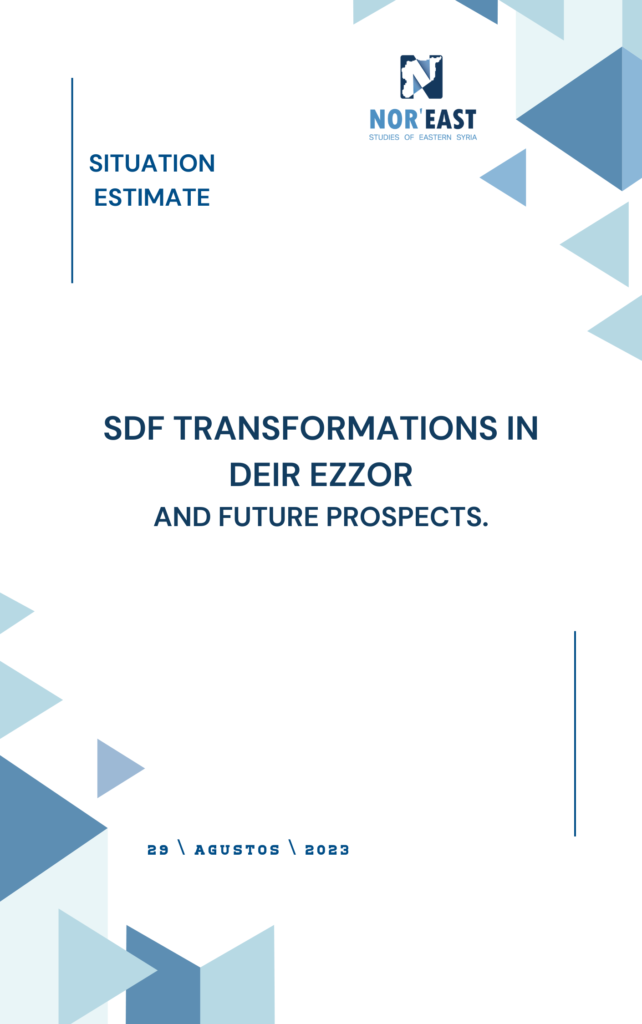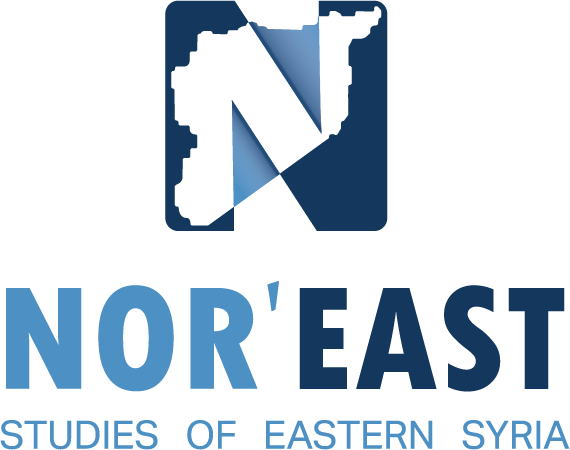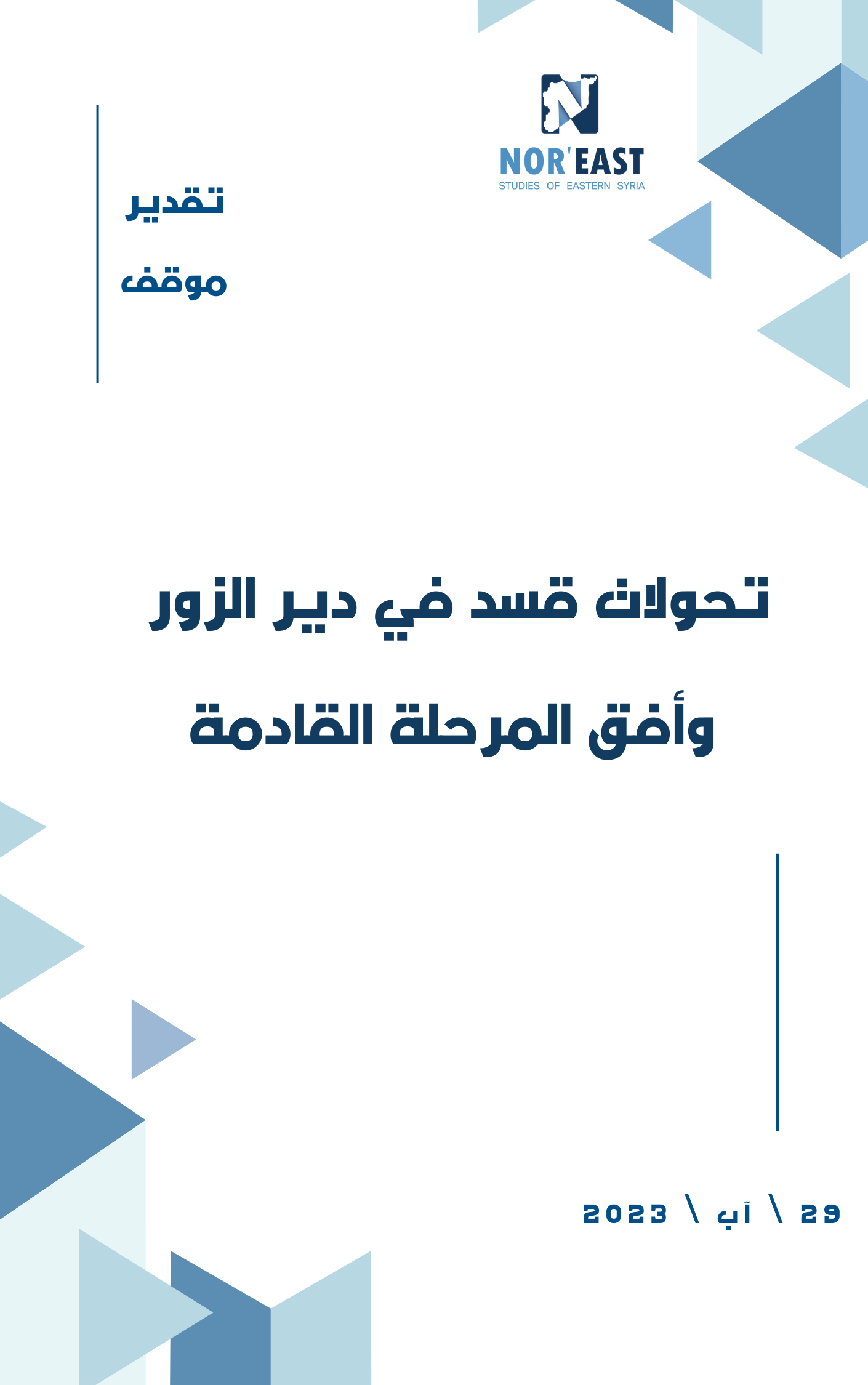SDF transformations in Deir Ezzor and future prospects.
The rise of SDF started with the Kurdish People’s Protection Units (YPG), the military arm of the Democratic Union Party (PYD) in the Syrian Kurdish majority areas. Later, when the international coalition was looking for a local partner to fight ISIS, limited coalitions of local components were added to it in al-Hasakah (Al-Sanadid) and al-Raqqa (Raqqa Revolutionaries Brigade) , while the expansion of SDF towards Deir Ezzor forced it to seek for an intermediary body to manage the area because it was unable to absorb the locals directly. Although the bad reputation of the leader Abu-khawlah, SDF sought the help of the Deir Ezzor Military Council (DMC), to be its arm in managing the province. DMC managed the war economy and confronted ISIS cells in the region, in addition to adjusting the region’s tribes and community but only within SDF mentality and policies. This intermediate body had to have a leadership commensurate with the tasks entrusted to it. With Ahmed Al-Khubail (Abu-Khawla) SDF and the coalition thought that they had found the requirements to impose control as an Arab branch of SDF without posing a threat to its interests.
The dispute accelerated between SDF and DMC a few weeks ago, when armed clashes broke out between the two parties, in which the coalition forces did not intervene directly. However, the clashes ended with a truce under International Coalition’s auspices, in which DMC achieved a moral victory rather than a military one. Whereas, on the social level, DMC presented itself as the sole representative of the Arab component in the region. This helped al-Khabil to replace the war against ISIS as a key to the conflict toward the Arab-Kurdish conflict as a tool to mobilize local society and tribes which are body repelling structures toward foreigners. SDF’s defeat and the control over Deir Ezzor with its four squares facilitated Al-Khabil to play a political role aiming pulls the rug from SDF, even partially, in Deir Ezzor especially in light of the existence of back channels between Abu-khawla with other the surrounding actors, . As an example of these, th channel between Abu-khwla and Assad regime of controlling oil smuggling between the two banks of the Euphrates River.
recent escalation of events
However, after the truce the last battle between the two sides has not ended , at least from SDF perspective, and the truce that took place was no more than a pause before finishing off DMC. Finishing process required a tight and comprehensive process that could not take place without the knowledge and coordination with the International Coalition. With the announcement of a large-scale operation against ISIS cells and spreading rumors about an escape attempt or disobedience in the Ghweran prison for ISIS detainees, SDF began to find a suitable justification and cover for its military mobilization and cutting off roads and Internet. At the same time, SDF leadership called on Ahmed Al-Khabil to attend a meeting in al-Hasakah with Mazloum Abdi, sponsored by International Coalition. As a result, Al-Khabil was arrested, along with around forty DMC leaders had besieged to prevent any reaction or re-assembly of DMC. After the arrest of its leader, DMC became a large military bloc without a head or leadership to direct it.
SDF process led to a wave of protests throughout DMC areas. DMC forces and members of the tribes in the region were also mobilized, which developed into armed confrontations, that dozens of DMC fighters and civilians were killed.
in order to control the pace of events, (where the main objective is to regain control of the scene) SDF was carful not to assassinate Al-Khabil directly, because the matter then will go beyond the person of Al-Khabil to the area or the military that he represents.
Impact of events:
At the local level, the dispute may shift from a military clash between military components affiliated with SDF, to an Arab-Kurdish conflict, especially with the escalation of a general mood in the region that pushes towards this. A mood That was formed partly by the marginalization and exclusion policies that SDF pursued on the part of the civil administrations towards the Arabs of the region and SDF’s poor selection of its representatives in the region, such as Al-Khubil himself, and the dominance of some non-Syrian cadres.
For its part, the regime tried to exploit the event, as statements came out from the commander of the National Defense Forces, Firas al-Iraqiya, and the commander of al-Baqir militia, Sheikh Nawaf al-Bashir. These statements call for fueling the conflict and indicate SDF inability to control the area. As for ISIS, which saw a suitable climate for movement, its media channels began publishing about the readiness of the cells to carry out operations in the region, besides the news about the escape of ISIS members who will strengthen its ranks. This, of course, will serve as a pretext for the continuation of SDF’s operations and the extension of its influence.
expected scenarios
It seems that the solutions of SDF to find a way out within the following scenarios :
1- Going on within two concerted paths, the first is putting pressure on the detained leaders to reach a settlement, whilst the second is waiting for the protests and clashes to exhaust their momentum and calm down by entering tribal mediation. Subsequently, SDF will replace DMC leadership and keep some existing members who were not engaged directly in the recent events. In addition to bring in a new figure from DMC second row and handing over leadership in line with SDF orientations.
This scenario is supported by the presence of forces that Abu Khawla’s brother referred to in his audio recordings, describing them as traitors from among our people. Thus, SDF saves itself the trouble of creating a new body.
Hence, the issue will not be resolved militarily without a consensual solution that satisfies all parties, since SDF military control of the region is out of the question. It’s worth mentioning here that any de-facto authority cannot enter the Kurdish or Arab component areas from outside, rather a local representative from the people of the region must be present. So the previous justifications for establishing DMC did not end, but rather increased, especially with what we mentioned of the general mood rejecting the rule of the external Kurd cadres.
2– The situation ends with full SDF military control, which authorizes it to completely uproot DMC and manufacture a replacement body. This will be by gathering tribal forces on a new person who will probably be from the leaders of the second or third row and from the malleable members who do not wish to challenge SDF authority. In this case, SDF should benefit from the lesson of al-Khabil, whose beginnings were under the same circumstances and conditions. At the head of the candidates to lead the new body are al-Shuaitat, as they have wealth and tribal solidarity, plus they are from Al-Akidat so they are able to absorb the members of the dissolved council. It is worth noting that Al-Khabil did not prepare a suitable replacement for him in the event of his absence, which led to greater problems, and facilitated SDF’s plans to isolate him and exclude him from the scene.
3- Dissolving DMC and not finding a local Arab alternative i.e.: reproducing the experience of Raqqa Revolutionaries Brigade and Abu Isa al-Raqqa. In this case, SDF will direct the administration of the region, similar to Raqqa and Hasakah, relying on Kurdish cadres. This scenario is unlikely at the present time and does not suit the situation of the region for several considerations, the most important of which are: the existence of security threats where ISIS is active, and the different tribal composition in Deir Ezzor which are more ferocious, less malleable. In case of applying this scenario, the region will not be stable and will become a theater of operations for the conflicting parties.







